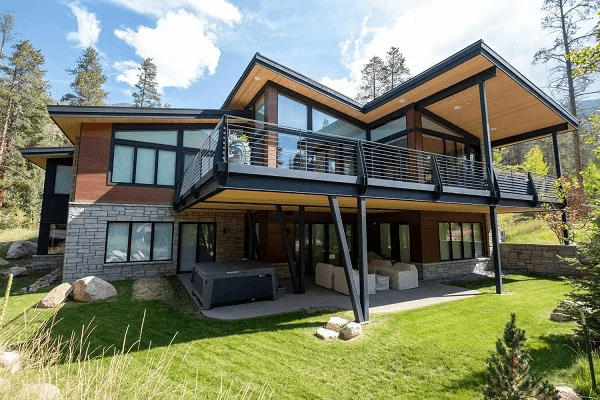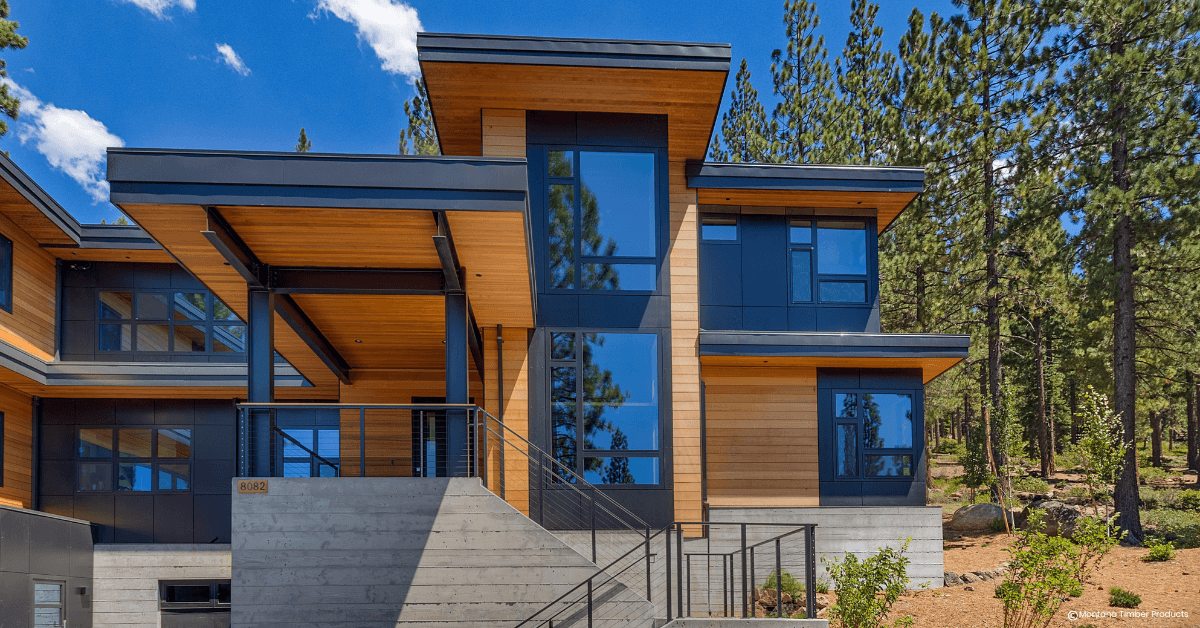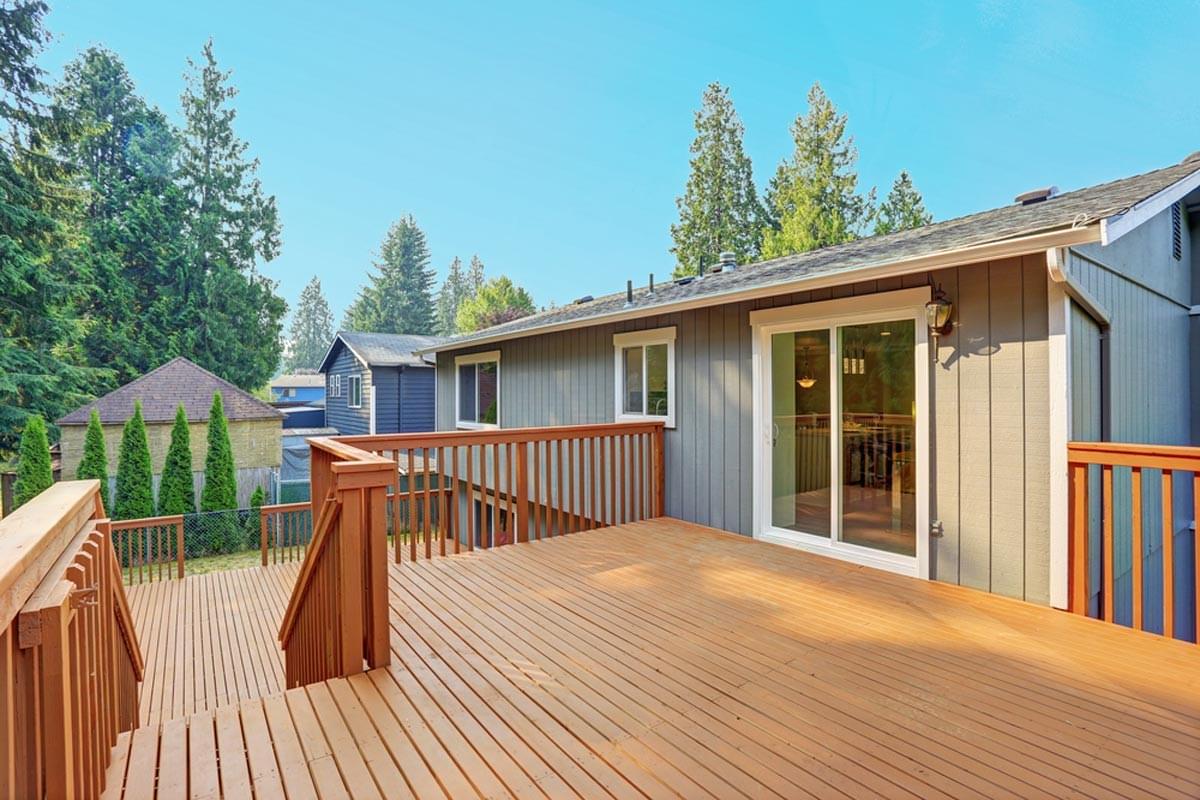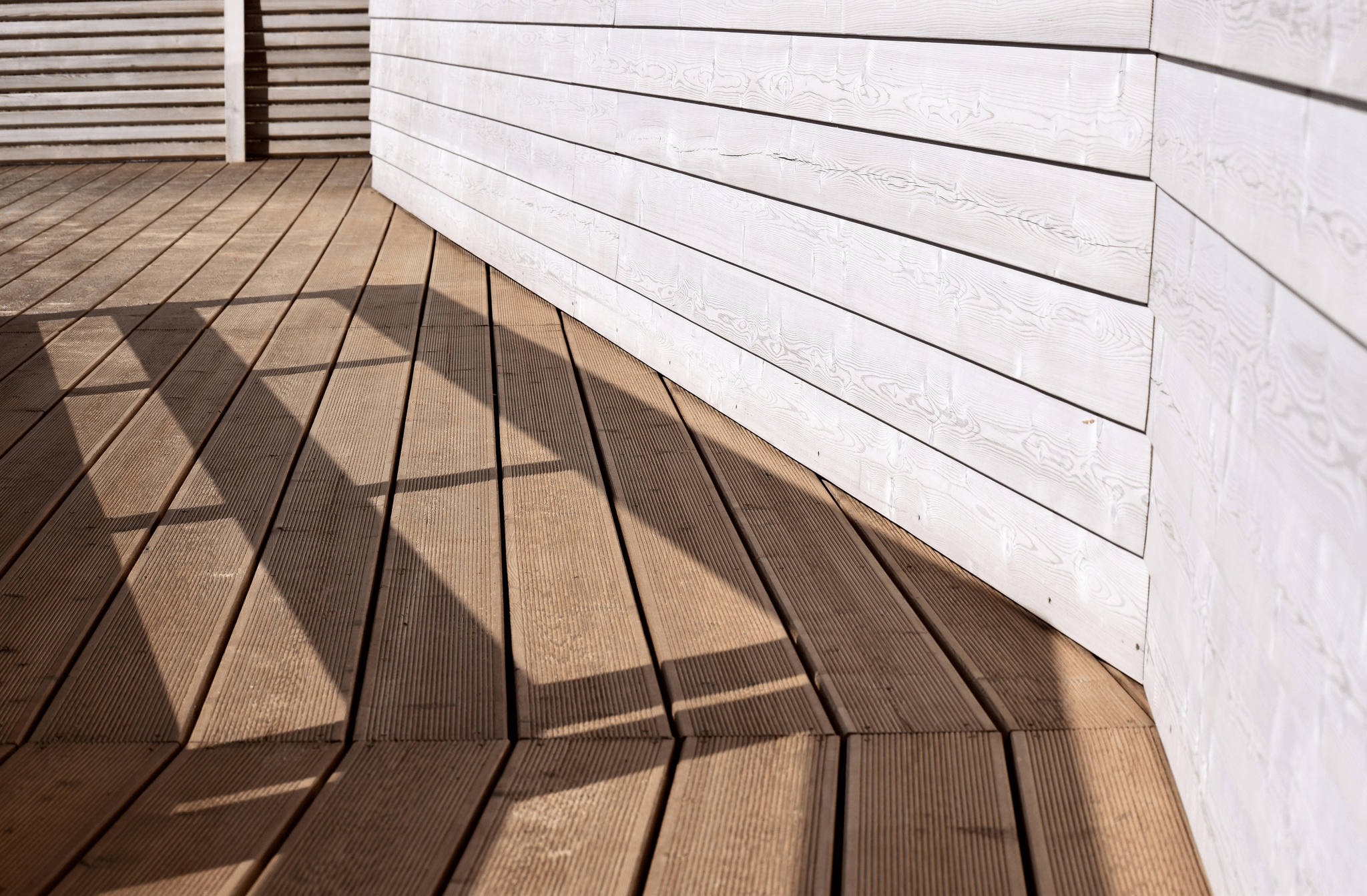Introduction
In an age where wildfires and fire hazards are increasingly prevalent, understanding fire safety is more crucial than ever. Homeowners and builders alike are turning to innovative solutions like Fire Retardant Wood Decking and Siding to protect their properties while maintaining aesthetic appeal. This introduction sets the stage for exploring the various options available, emphasizing the importance of quality materials that enhance safety without compromising style.
The Importance of Fire Safety
Fire safety is not just a precaution; it’s a necessity in today’s world. With the rise in extreme weather events and urban development near wildfire-prone areas, knowing how to safeguard your home from fire risks is paramount. By investing in fire-retardant treatments and materials, such as Fire Retardant Wood Decking and Siding, you can significantly reduce the chances of catastrophic damage.
Exploring Fire Retardant Options
One popular choice is treated wood; but what exactly is a fire-retardant treated wood? Understanding these options allows homeowners to make informed decisions about how best to protect their investments without sacrificing beauty or functionality.
Choosing Quality Materials
Selecting quality products ensures that you’re not only enhancing safety but also prolonging the life of your structures—think long-term benefits! Whether you’re considering siding or decking, knowing what kind of siding is fireproof can help guide your choices toward durable and effective solutions.
Understanding Fire Retardant Wood

This type of wood has been specially treated to resist ignition and slow the spread of flames, making it a popular choice for both decking and siding applications. With increasing awareness of fire hazards, many homeowners are curious about what makes fire-retardant wood so essential in modern building practices.
What is a fire-retardant treated wood?
So, what is a fire-retardant treated wood? Essentially, it's lumber that has undergone a chemical process to enhance its resistance to fire. This treatment involves infusing the wood with specific compounds that help prevent combustion, making it significantly safer for use in areas prone to wildfires or other fire risks. Fire retardant wood decking and siding can be an excellent investment for those looking to improve their home's safety profile without sacrificing aesthetics.
How it enhances safety and longevity
Fire-retardant treated wood not only enhances safety but also contributes to the longevity of your structures. By resisting flames, this type of wood reduces the risk of catastrophic damage during a fire event, potentially saving lives and property. Additionally, because these treatments can also protect against decay and insect damage, you may find that your investment in fire retardant wood decking and siding pays off over time through reduced maintenance costs.
Comparison with untreated wood
When comparing treated versus untreated options, the benefits become quite clear. Untreated wood is naturally combustible; once exposed to flames or extreme heat, it can ignite quickly and contribute to the spread of a fire. In contrast, fire-retardant treated woods are designed specifically to withstand such conditions—making them ideal for creating safe living spaces while maintaining an attractive exterior with various design options available.
Fire-Resistant Wood Siding Options

Homeowners often wonder, Can wood siding be made fire resistant? The answer is a resounding yes! With innovative treatments and materials, wood siding can be modified to resist flames effectively while maintaining its natural beauty.
Can wood siding be made fire resistant?
Absolutely! Fire-retardant treated wood is designed specifically to resist ignition and slow the spread of flames. This treatment involves infusing chemicals into the wood fibers that help reduce flammability without compromising the structural integrity of the material. As a result, homeowners can enjoy the warmth and charm of natural wood while benefiting from enhanced safety features.
Top materials for fire-resistant siding
When exploring options for fire-resistant siding, several materials stand out in terms of performance and aesthetics. For instance, treated cedar or redwood can provide both beauty and a degree of flame resistance when properly treated. Additionally, engineered woods such as fiber cement offer exceptional durability and are considered non-combustible—an excellent choice for those asking what kind of siding is fireproof? These materials not only enhance safety but also add value to your property.
Benefits of using fire-resistant siding
Choosing fire-resistant siding brings numerous advantages beyond just peace of mind regarding safety. Firstly, these materials often have longer lifespans due to their enhanced resistance against environmental factors like moisture and pests, meaning less maintenance over time. Secondly, investing in Fire Retardant Wood Decking and Siding can potentially lower insurance premiums as insurers recognize the reduced risk associated with these products—making it a smart financial move too!
Evaluating the Disadvantages

While fire-retardant treatments can significantly enhance the safety of wood, there are notable disadvantages to consider. One major concern is that these treatments can sometimes alter the natural properties of wood, impacting its structural integrity over time. Additionally, the longevity of fire-retardant treatments can be questionable, as they may require reapplication or maintenance to remain effective.
What is a disadvantage of using fire-retardant treatment on wood?
One disadvantage of using fire-retardant treatment on wood is that it may not provide a permanent solution for fire safety. Over time, exposure to weather elements can degrade the effectiveness of the treatment, leading to potential vulnerabilities in your Fire Retardant Wood Decking and Siding. Furthermore, some treatments can introduce chemicals into the wood that might affect its appearance or even make it more susceptible to decay if not properly maintained.
Performance concerns with treated wood
Performance concerns with treated wood often arise from how well it holds up under various conditions compared to untreated alternatives. For example, while Fire Retardant Wood Decking and Siding can resist flames better than untreated options, they may not perform as well in terms of moisture resistance or overall durability. This means that homeowners must carefully evaluate whether the benefits outweigh any potential drawbacks when selecting materials for their projects.
Balancing safety and aesthetics
When deciding on materials for your home’s exterior, balancing safety and aesthetics becomes crucial—especially when considering options like Fire Retardant Wood Decking and Siding. While it's essential to prioritize fire safety by asking questions like Can wood siding be made fire resistant? one must also consider how these choices impact curb appeal and design cohesion. Ultimately, finding a middle ground where both beauty and safety coexist is key; after all, no one wants a fortress that looks like a bunker!
Alternative Siding Solutions

While fire-retardant wood decking and siding offer protection, there are other materials that can provide even greater peace of mind. Understanding what kind of siding is fireproof and the benefits of non-combustible options can help homeowners make informed decisions.
What kind of siding is fireproof?
Fireproof siding options are designed to withstand flames without igniting or contributing to the spread of fire. Materials such as fiber cement, stucco, and metal are excellent choices in this category. Homeowners often wonder, Can wood siding be made fire resistant? While treated wood can enhance safety, it may not match the performance of truly non-combustible materials.
Reviewing non-combustible materials
Non-combustible materials are those that do not burn or support combustion when exposed to high temperatures. Fiber cement boards, for instance, combine sand, cement, and cellulose fibers for a durable exterior that resists flames effectively. Other great alternatives include stone veneer and brick; both provide aesthetic appeal while ensuring your home remains safe from potential fires.
Innovations in siding technology
The world of siding technology is constantly evolving with new innovations aimed at improving safety and performance. Recent advancements have introduced composite materials that mimic the look of traditional wood while offering enhanced resistance to flames—making them ideal for those considering fire-retardant wood decking and siding alternatives. Furthermore, manufacturers are developing coatings that improve the fire resistance of existing materials without compromising their appearance or structural integrity.
Choosing the Right Products

With a plethora of options available, understanding the benefits of specific brands and materials can guide homeowners toward the best decisions. In this section, we will explore why Composite Decking Inc stands out, how to evaluate performance ratings and certifications, and provide tips for selecting the best fire retardant wood decking and siding.
Why Composite Decking Inc is a top choice
Composite Decking Inc has earned its reputation as a top choice in the realm of fire retardant wood decking and siding due to its innovative materials that blend durability with safety. Their products often incorporate fire-retardant treatments that enhance resistance to flames while maintaining an appealing appearance. Furthermore, their commitment to sustainability means you are not just choosing safety but also supporting environmentally friendly practices.
The brand's focus on quality ensures that their offerings withstand various weather conditions without compromising on performance or aesthetics. When considering what is a fire-retardant treated wood option, Composite Decking Inc consistently delivers products that meet stringent safety standards while offering long-lasting beauty. Homeowners looking for peace of mind will find that investing in these materials can lead to significant long-term benefits.
Evaluating performance ratings and certifications
Understanding performance ratings and certifications is essential when choosing fire retardant wood decking and siding. These metrics provide insight into how well a product performs under various conditions, including exposure to flames or extreme weather. Look for products with recognized certifications from organizations like Underwriters Laboratories (UL) or ASTM International; these endorsements ensure you are selecting materials that have undergone rigorous testing.
Additionally, pay attention to the specific ratings assigned to different types of wood treatments—these can indicate how effectively they resist ignition or slow down flame spread. When pondering what kind of siding is fireproof, remember that not all treated woods offer equal levels of protection; thus, understanding these ratings can help you make an informed decision about your investment in fire-resistant materials.
Tips for selecting the best fire retardant wood decking and siding
Selecting the best fire retardant wood decking and siding involves more than just picking aesthetically pleasing options; it requires thoughtful consideration of several factors. First, always check if the product has been treated specifically for fire resistance—what is a disadvantage of using fire-retardant treatment on wood? Sometimes treatments may alter natural appearances or require special maintenance routines over time.
Next, consider consulting reviews from other homeowners who have used these products; real-world experiences can provide valuable insights into durability and aesthetic outcomes after installation. Lastly, don't forget about warranties—reputable manufacturers often back their products with substantial guarantees against defects or performance issues related to their flame-resistant properties.
In summary, by focusing on trusted brands like Composite Decking Inc., evaluating key performance metrics rigorously, and following practical selection tips tailored around your needs—you're well on your way to enhancing your home’s safety profile with quality fire retardant wood decking and siding.
Conclusion
In conclusion, fire safety is a paramount concern for homeowners and builders alike. Understanding the nuances of Fire Retardant Wood Decking and Siding is crucial in ensuring a structure's resilience against potential fire hazards. By exploring the various options available, one can make informed decisions that enhance safety without compromising on aesthetics.
Recap of Fire Safety Considerations
Fire safety considerations extend beyond mere compliance with regulations; they involve an understanding of materials like fire-retardant treated wood. What is a fire-retardant treated wood? It's wood that has been chemically treated to resist ignition and slow down flame spread, providing an essential layer of protection. Additionally, knowing the difference between untreated wood and its fire-treated counterpart can help in choosing materials that not only look good but also enhance overall safety.
Choosing the Right Fire-Resistant Materials
When it comes to selecting materials, one might wonder: Can wood siding be made fire resistant? The answer is a resounding yes! With advancements in technology, there are numerous options for fire-resistant siding that combine beauty with functionality. However, it’s essential to weigh the benefits against potential drawbacks—what is a disadvantage of using fire-retardant treatment on wood? Some treatments may alter the appearance or longevity of the material, so careful consideration is needed.
Long-Term Benefits of Fire-Retardant Choices
Investing in Fire Retardant Wood Decking and Siding offers long-term benefits that far outweigh initial costs. Not only do these materials provide peace of mind during wildfire seasons or in areas prone to fires, but they also contribute to property value over time as more buyers seek out homes equipped with robust safety features. Ultimately, choosing what kind of siding is fireproof ensures your home remains a safe haven while enhancing its aesthetic appeal.
